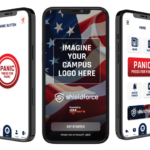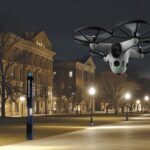1 .What do we want to detect?
Develop a list of the three or four threat objects most likely to be encountered. This information will help a campus determine the sensitivity of its detectors. Note that keys, pens or coins may cause false alarms, particularly in those devices with sensitivity levels that are set very high.
2. What is our desired throughput?
Facilities with a lot of traffic, such as large schools, can find this point quite challenging. The weapons screening process must be fast enough so students, patients, staff, vendors and other campus constituents can get to their destinations in a timely manner, yet device accuracy must be maintained.
Throughput is often affected by:
- How well the detector operators are trained
- The number of operators conducting the screening
- How the screening process is organized
- The number of zones a portal covers
- The compliance of those being screened
3. What area(s) must be protected?
Universities often deploy detectors at the entrances of stadiums for athletic events or concerts. Hospitals, particularly in high-crime areas, sometimes deploy this type of equipment outside emergency rooms or other areas prone to incidents. Some K-12 schools, particularly in areas prone to criminal activity, deploy detectors at the entrances of schools, particularly if a threat has been reported. In all types of campuses, handheld detectors can also be deployed for spot checks or when re-inspection is necessary.
4. Where should our detectors be placed?
When possible, metal detection equipment should not be placed near objects that may cause interference. Those objects include:
- Fluorescent lights
- Any type of machinery that transmits electromagnetic fields
- Air ducts with metal components that may expand and contract
- Plumbing
- Chain link fences
- Medium-size and large metallic structures
A detector’s settings should be adjusted to account for these objects.
5. What type of detectors should we purchase?
Multi-zone detectors normally detect threat objects faster because they can pinpoint with greater accuracy a threat object’s location. Although these devices increase throughput speed, they are the most expensive products on the market compared to single-zone and dual-zone detectors.
Single-zone products only inform the operator that there is metal on the body. Dual-zone detectors indicate on which side the metal is located. The operator will then need to remove the individual to another checkpoint to scan his or her entire body — or half of the body if a dual-zone device was used — with a handheld metal detector to locate the offending object.
6. How do we know our systems are working properly?
Vendors normally fine tune the walk-through detectors’ sensitivity settings. Calibration trials can be performed by obtaining items of equal size and material composition to the predetermined threat objects discussed in No. 1. These items should be placed on various parts of the body of a person who then walks through the portal.
A portal might be subjected to 20 walk-through tests per location. It should have a 95 percent pass rate. Those detectors that don’t pass should have their sensitivity levels adjusted.
7. When should we deploy our metal detectors?
Schools may choose to deploy these devices on a daily basis or randomly. When done daily and in the same location, students might find ways to circumvent the process and avoid detection. Other types of campuses may choose to deploy metal detectors only when the risk is elevated (e.g. treating domestic violence patients; rival gang members; forensic patients).
Related Articles:
- Wesleyan U. Closes Graduation to Public for Obama Speech
- Garrett Metal Detectors to Help Safeguard 2008 Summer Olympics
- Police: S.C. High School Bombing Plot Foiled
- Alabama High Schools Receive Security Upgrade
- 3 Dead in Georgia Hospital Shooting
- Cleveland School District Unveils $9M Safety Plan
- SIA Says President’s FY09 Budget Plan Shortchanges Security
Robin Hattersley Gray is executive editor of Campus Safety. She can be reached at [email protected].
To subscribe to the unabridged print version of Campus Safety magazine, click here.













